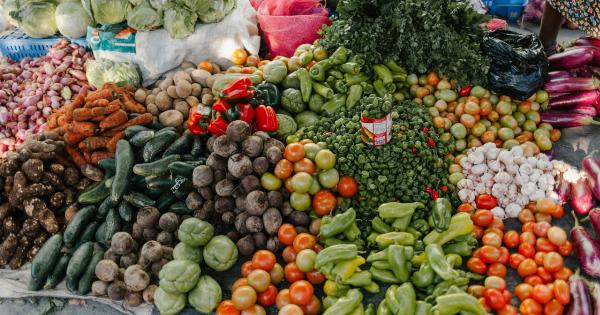Watermelon is one of the most popular fruits, especially during the summer season. It is known for its juicy, sweet, and refreshing taste. In addition to being tasty, watermelon is also a nutritious fruit that provides several health benefits.
However, various factors can affect the nutrient content of watermelon, including temperature. This article will explore the impact of temperature on watermelon nutrient content.
Nutritional Value of Watermelon
Before discussing the impact of temperature on watermelon nutrient content, it is essential to understand the nutritional value of this fruit. Watermelon is a low-calorie fruit that is rich in various vitamins and minerals, including:.
- Vitamin C
- Vitamin A
- Potassium
- Magnesium
- Vitamin B6
- Thiamin
- Copper
- Fiber
In addition to these vitamins and minerals, watermelon also contains lycopene, an antioxidant that gives the fruit its reddish-pink color. Studies have shown that lycopene can help prevent certain types of cancer and cardiovascular diseases.
The Impact of Temperature on Watermelon Nutrient Content
Temperature is one of the critical factors that can affect the nutrient content of watermelon. The temperature at which watermelon is grown, stored, and transported can influence its nutritional value.
Here are some ways in which temperature can impact watermelon nutrient content:.
1. Growing Temperature
The temperature at which watermelon is grown can affect its nutrient content. Studies have shown that watermelon grown at higher temperatures has a higher lycopene content than watermelon grown at lower temperatures.
This could be due to the fact that high temperatures can increase the synthesis of lycopene in watermelon plants.
2. Storage Temperature
The temperature at which watermelon is stored can also affect its nutrient content. Studies have shown that watermelon stored at lower temperatures has a higher nutrient content than watermelon stored at higher temperatures.
This could be because low temperatures can help slow down the ripening process of the fruit, allowing it to retain more of its nutrients.
3. Transportation Temperature
The temperature at which watermelon is transported can also impact its nutrient content. When watermelons are transported over long distances, they are often subjected to high temperatures, which can cause their nutrient content to degrade.
This is because high temperatures can hasten the breakdown of vitamins and minerals in fruits and vegetables. Therefore, it is essential to transport watermelon at the right temperature to preserve its nutrient content.
Conclusion
Temperature is a critical factor that can impact the nutrient content of watermelon. To ensure that you get the maximum nutritional value from this fruit, it is essential to store and transport it at the correct temperature.
Additionally, growing watermelon at the right temperature can help to increase its lycopene content, which can provide several health benefits. Therefore, if you want to enjoy the full benefits of watermelon, pay close attention to the temperature at which it is grown, stored, and transported.






























